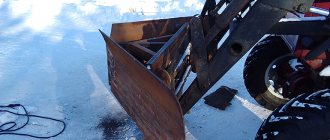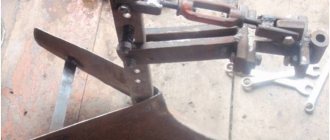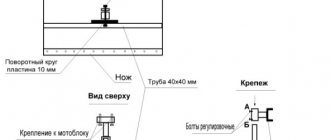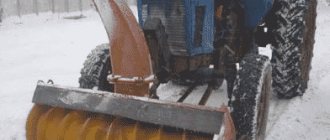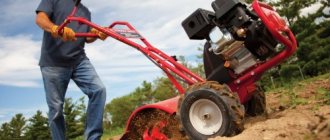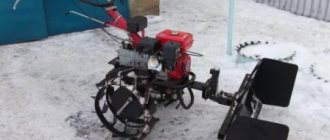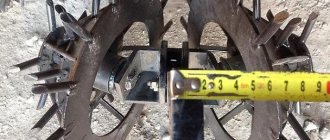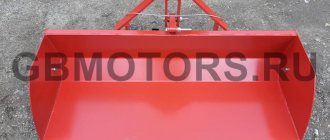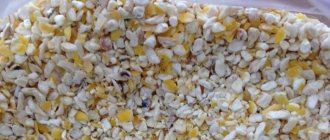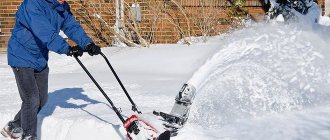Soil cultivation is one of the main agrotechnical activities , which is a mandatory part of the annual soil cultivation regime. Thanks to this process, the soil is loosened and mixed, more weeds are destroyed, and the field surface is leveled. This process is carried out using cultivators. Also, there is the concept of deep loosening, during which, without turning over, the soil is loosened to a depth of more than 12 centimeters. For this purpose, special devices are used - chisel cultivators, such as LopLosh.
Cultivation is necessary because it greatly improves the quality of the soil, making it more suitable for the growth of any crops.
After cultivation, water and air conditions improve, beneficial microorganisms are activated. Thanks to this, the productivity of the land increases, the number of sprouted seeds increases and the quality of the harvest improves.
As a result of cultivation, the top layer of soil becomes more fertile - the resulting loosened layer holds moisture much better and prevents its evaporation.
Also, the plot not only becomes smoother and more convenient to cultivate, but also contains a much smaller number of weeds that can simply choke the crop after it rises - when this moment comes, it is very difficult to remove them without damaging useful plants.
Also, cultivation is especially useful for soil in places with a dry climate, where the upper, fertile layers of soil are not able to retain enough moisture necessary for the normal growth of most crops.
Digging up the earth, in this case, leads to even greater losses and a complete imbalance - the harvest may be even worse than if the earth had not been dug up .
About the manufacturer of the cultivator LopLosh
On large areas, cultivation is carried out using special equipment - a tractor, to which cultivators of various designs are attached, with different shapes of cutters, which perform loosening.
But the use of such equipment and the use of complex technologies and cultivation methods are not profitable in areas with a small area.
Therefore, in order to achieve good results when harvesting crops at home, walk-behind tractors and walk-behind cultivators with appropriate attachments are widely used on areas of about one hectare.
Cultivators for the garden, manual, electric for the dacha, have proven their usefulness more than once, as well as their efficiency - depending on exactly what area needs to be cultivated and what additional functions this equipment should perform, you can choose exactly what is best suited for the future to the owner of the walk-behind tractor (or try to make homemade products for the walk-behind tractor, new versions).
In addition, if necessary, you can make a lot of additional equipment for the walk-behind tractor yourself, using only what you currently have “on the farm” - from scrap materials you get products that are not inferior in functionality to products assembled in a factory.
But still, even walk-behind tractors, regardless of where and by whom they are made, have their drawbacks. First of all, this is the main part of each product - the engine. Regardless of whether it is gasoline or diesel, it still requires care and repair (adjusting the carburetor of a walk-behind tractor is not so difficult).
Any engine requires regular oil changes; each of them has parts and consumables that wear out very quickly and also require regular replacement.
The same applies to attachments - there are a large number of variations, but most often only a small part of it is used, just a few devices, which also need repairs, which cannot always be done quickly, especially if the workshop does not have its own personal welding machine .
And without it, doing anything is very difficult and even impossible. Therefore, in order to make the task easier for gardeners in cultivating the land, the Muromskaya PROMTECH company offers an alternative to bulky devices - the LopLosh cultivator .
LopLosh
The company is engaged in the manufacture of highly specialized mechanical devices with electric drives and parts for them.
The products of this company have already gained trust and become popular among owners of small farms, thanks to their convenience and practicality.
LopLosh, the name of which comes from two words - shovel and horse, is especially popular.
Their design features, horizontally positioned cutters, an electric motor as a drive and a convenient design make it possible to cultivate almost any soil without much time, effort and resources.
In this area, they successfully compete with any other devices and mechanisms, such as: cultivator Mantis, Cayman, Viking, Texas, Swift, Champion, Patriot, outperforming them in many respects.
Cultivators LopLosh
The electric cutter of the LopLosh cultivator from a domestic manufacturer has a wide range of applications:
- Soil cultivation by deep loosening. This method is akin to high-quality plowing with professional equipment.
- Hilling up garden plants by creating smooth and clear furrows.
- Mixing organic fertilizers when plowing the soil.
- Weeding of sprouted crops and destruction of various weeds and grass.
- Cultivation of virgin lands.
Advantages and disadvantages
The cultivator has a number of significant advantages:
- The specificity of the cultivator control system, which ensures operator safety during operation: the equipment is driven by human effort and stops independently in the absence of it.
- When working, the machine moves backward, as when working with a classic shovel. This nuance makes it easier for the operator to move and avoids trampling the soil that has already been treated.
- Compact dimensions and low weight provide excellent maneuverability of the unit.
- The equipment is capable of removing weed roots, which helps increase productivity.
These motor cultivators also have some minor disadvantages:
- Cultivation of virgin soil is best done in two approaches. This way you can achieve a better result.
- The equipment is non-dismountable, therefore, it requires a lot of space for storage and transportation.
Popular models and their prices
For those who like the LopLosh cultivator, the price will depend on which model they choose. In total, the line includes three models, which differ from each other in power, and, accordingly, in the type of soil they are capable of processing.
LopLosh
But they are all united by the special design of horizontal cutters. There are three of them in total, two of which are power, operating at a speed of 300 rpm. They are designed for loosening and weeding the soil, and in fact, perform the main function.
One cutter has a higher speed - it is used for mulching and developing virgin soil.
1100
The electric cultivator LopLosh 1100 is a device with the lowest power that is available on the equipment market - it is about 1.1 kilowatts.
This power is quite enough to cultivate light soil at a fairly fast pace. The electric motor installed on this product is asynchronous, single-phase, and operates in continuous operation. The weight of the entire product is approximately 35 kilograms, the working width is 30 centimeters, and the tillage depth is 18 centimeters.
The price of this product on the Russian market is about 16,900 rubles.
1500
Electric cultivator LopLosh 1500, the second most powerful cultivator. Basically, it is identical to the previous model, with the exception of some parameters, such as the engine power, which is already 1.5 kilowatts, and the weight is 37 kilograms.
The remaining characteristics are absolutely identical - single-phase asynchronous motor, continuous operation, soil working width - 30 centimeters, soil processing depth - 18 centimeters. The average price of this product is 18,400 rubles.
2000
Electric cultivator LopLosh 2000, the most powerful product from the line of LopLosh cultivators. The power of the engine installed on this model is 2 kilowatts . It is capable of continuous operation and weighs about 38 kilograms.
This device is the best option for owners of areas with heavy soil, since out of the entire line of cultivators, it has enough power to loosen most of them in a single pass.
In this video, the presented model is launched.
How to make a motor cultivator with your own hands
In fact, making a loplosh cultivator with your own hands will not be so difficult . All you need is a strong frame to which all the components will be attached - control handles, support stand and electric motor.
The main part, the engine, of course, will need to be chosen responsibly, since it will need not just more power, at least one kilowatt, but also reliability - it will be located on a loose structure.
The power cable must be selected in such a way that its insulation is resistant to all possible influences, since most of the time it will be outdoors and lying on the ground.
Also, in order to ensure reliability, good fittings are needed - all switches and relays must be designed to be used in difficult conditions and with high vibrations, which over time can render them unusable, beyond the possibility of repair.
One of the most labor-intensive activities in agriculture is harvesting. With the Polesye combine harvester you will quickly and efficiently harvest the entire crop.
A snowmobile will help you get around in snowy areas. The Ermak snowmobile is quality, speed and reliability.
A garden sprayer is an important and highly effective tool that allows you to protect plants, provide timely fertilizing and preventive maintenance. Here you can learn how to make a sprayer yourself.
The frame and metal components can be made of any metal , with the exception of the handles - they need to be insulated as best as possible to avoid electric shock if electric current somehow gets into the body.
The only serious problem can be the manufacture of a gearbox to transmit torque to the knife shafts.
In fact, it will be quite difficult to make it at home.
But, if the correspondence of the homemade design to the original is not fundamental, three knives can be easily replaced with two, or even one - as you know, the main thing is not the quantity, but the ability to use. In this way, a single blade can be connected directly to the motor, without the need for additional parts.
User manual
For those household owners who purchased a LopLosh cultivator, the instruction manual will explain the main functions and method of carrying out cultivation and mulching work.
It consists of several points and sub-points that describe the purpose of the device: loosening the soil, forming furrows, hilling manure, processing turf, chopping weeds, cultivating between rows. Below are the technical data of the model for which the manual and delivery kit are provided, what is included in it.
The following are safety requirements when working with the device: avoid working with the device in the rain, use special clothing, and during setup and maintenance of the device, it is necessary to disconnect it from the network. When cultivating the soil, the power cable must be kept in a visible place and must always be in sight.
The next point is a description of the device, where all the main parts of the device are indicated, the sequence of their connections. Almost at the end of the instructions, the processes that can be performed using LopLosh and the procedure for preparing the product for their implementation are described:
- For loosening, left and right knives are installed on the shafts, and side walls are installed on the gearbox.
Knives
- The knives must be installed in such a way that their cutting part is directed in the direction of rotation. The walls are fastened in such a way that the fastening studs become in their seats; they need to be secured with nuts.
- The depth at which loosening will be carried out must be set by installing booms, above or below the knives.
- For mulching, it is enough to install a special knife on the high-speed shaft, and you need to install side walls on the gearbox.
- In order to form furrows with the help of LopLosh, you need to install several knives - the left and right row-crop knives are on the power shafts, and a hiller is installed on the gearbox, facing it.
In this video, the formation of beds using a LopLosh cultivator.
After the device is prepared for one of the operations, it is necessary to position it correctly on the treated soil. This process is described in the next paragraph of the instructions.
The main conditions are the installation of the device in the correct direction, with the handles in the direction of movement, and the placement of the power cable, which must be placed in rings on the leash.
Movement during tillage can be carried out at maximum speed, at which there are no signs of heavy load on the engine - it does not make extraneous noise and does not overheat.
Gasoline
This type of motor cultivator is distinguished by the following design features:
- Filling the fuel tank is done with the engine turned off.
- For optimal performance, the fuel level should not exceed 2/3 of the fuel tank capacity.
- The unit’s motor is mounted on a gearbox; this design ensures high performance.
- When starting the engine, the blades do not come into contact with the soil.
The left handle of the cultivator is used to control the cutters and knives, and the right handle is used to start and stop the engine.
Technical characteristics of LopLosh petrol cultivators:
| Characteristics | Unit measurements | Indicators |
| Motor model | Brigg and Stratton 500 series | |
| Motor type | Carburetor | |
| Fuel tank volume | l | 0,9 |
| Working fuel | AI-92 | |
| Width of treated area | cm | 30 |
| Cultivation depth | cm | 18 |
| Weight | kg | 35 |
Video review of LopLosh cultivators

